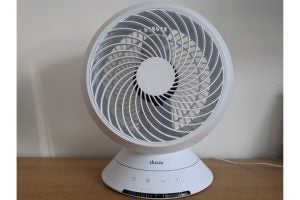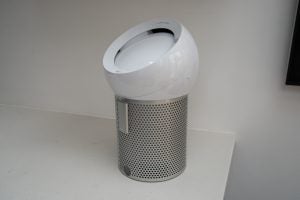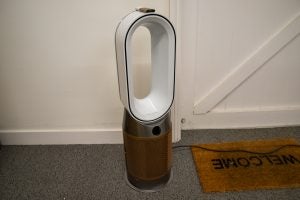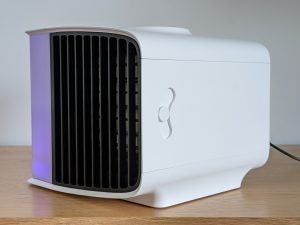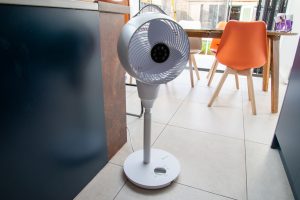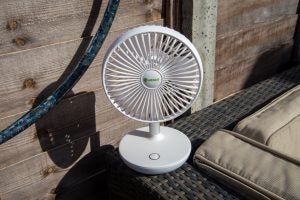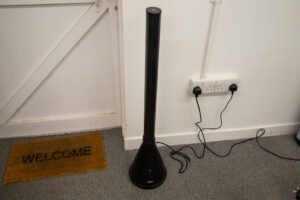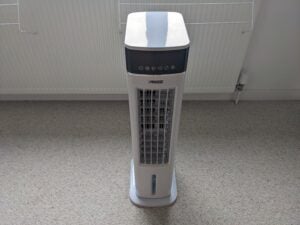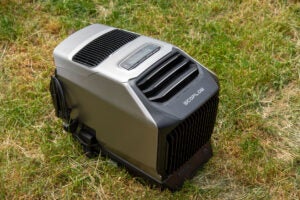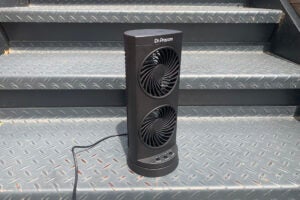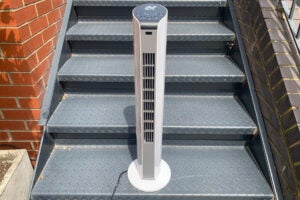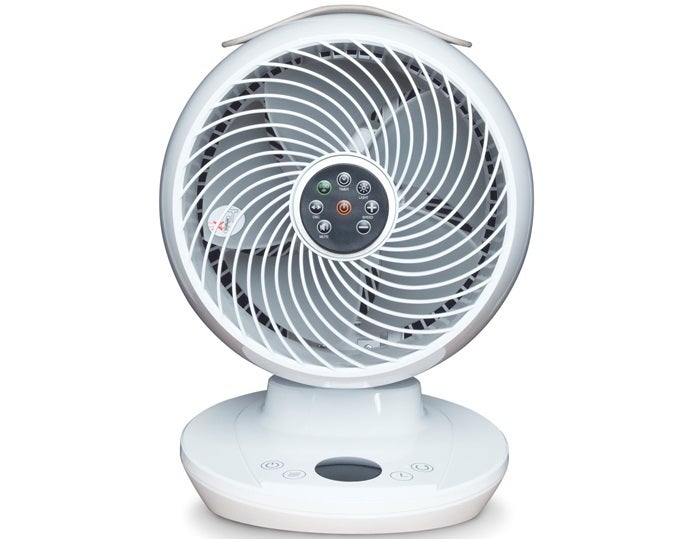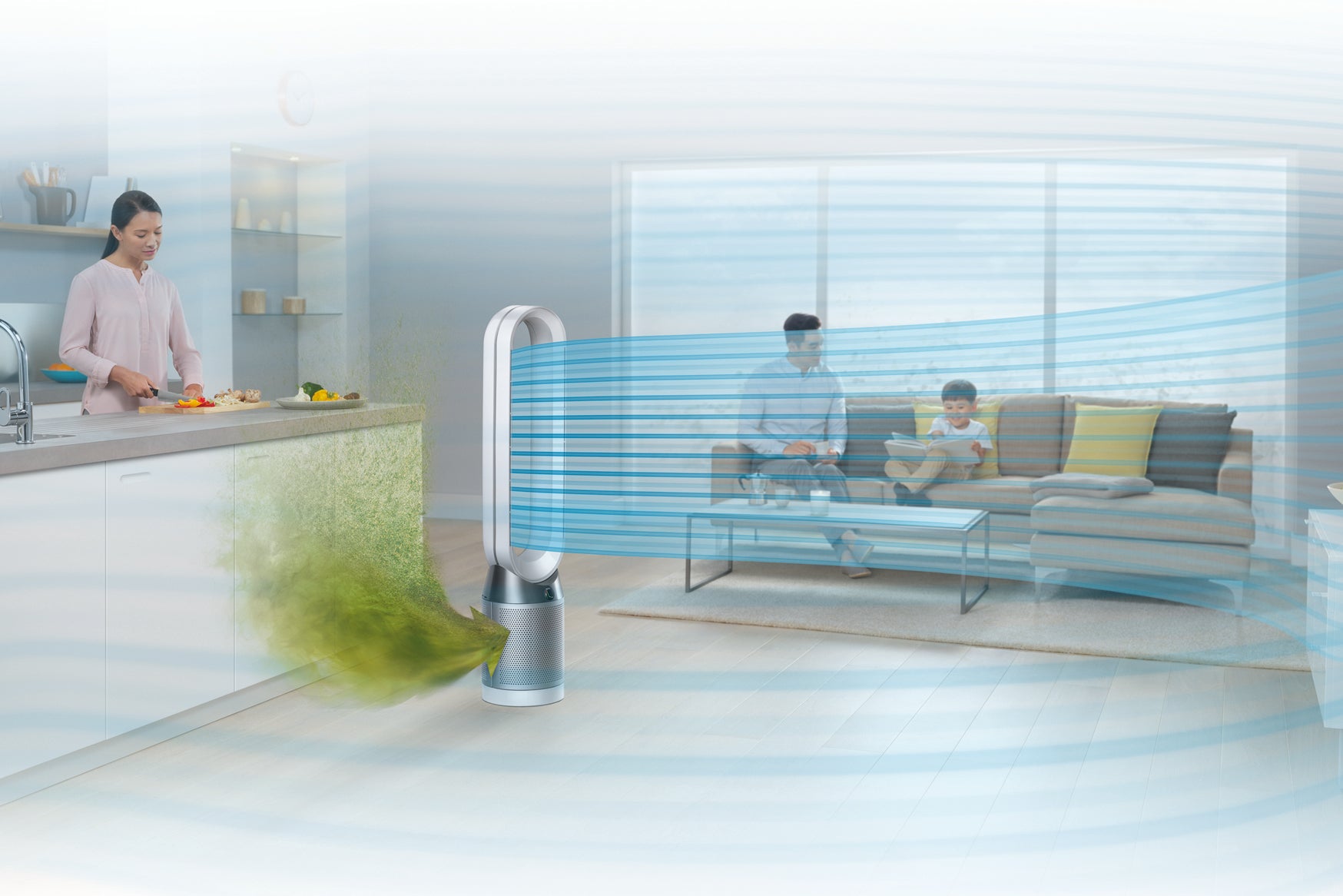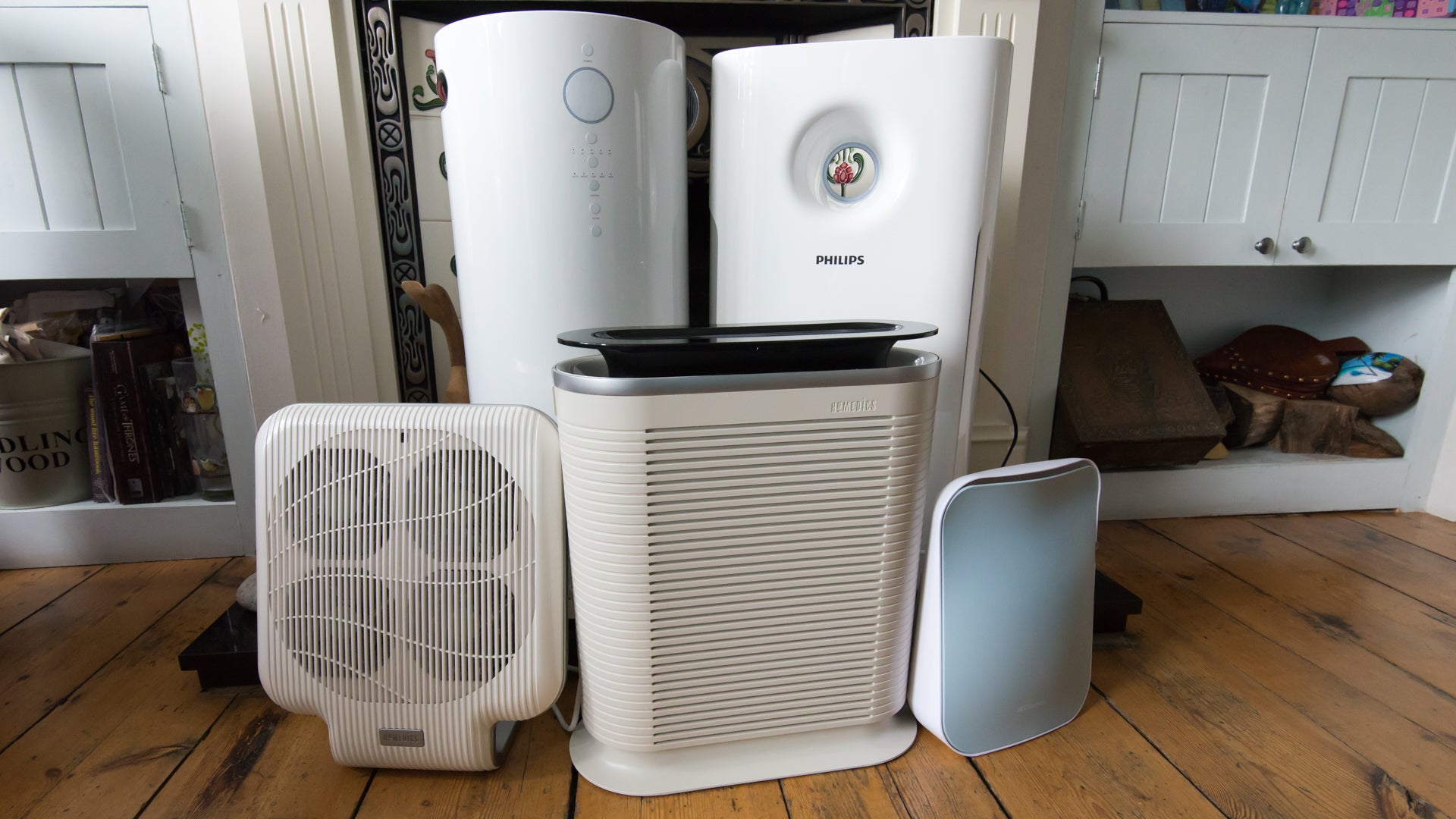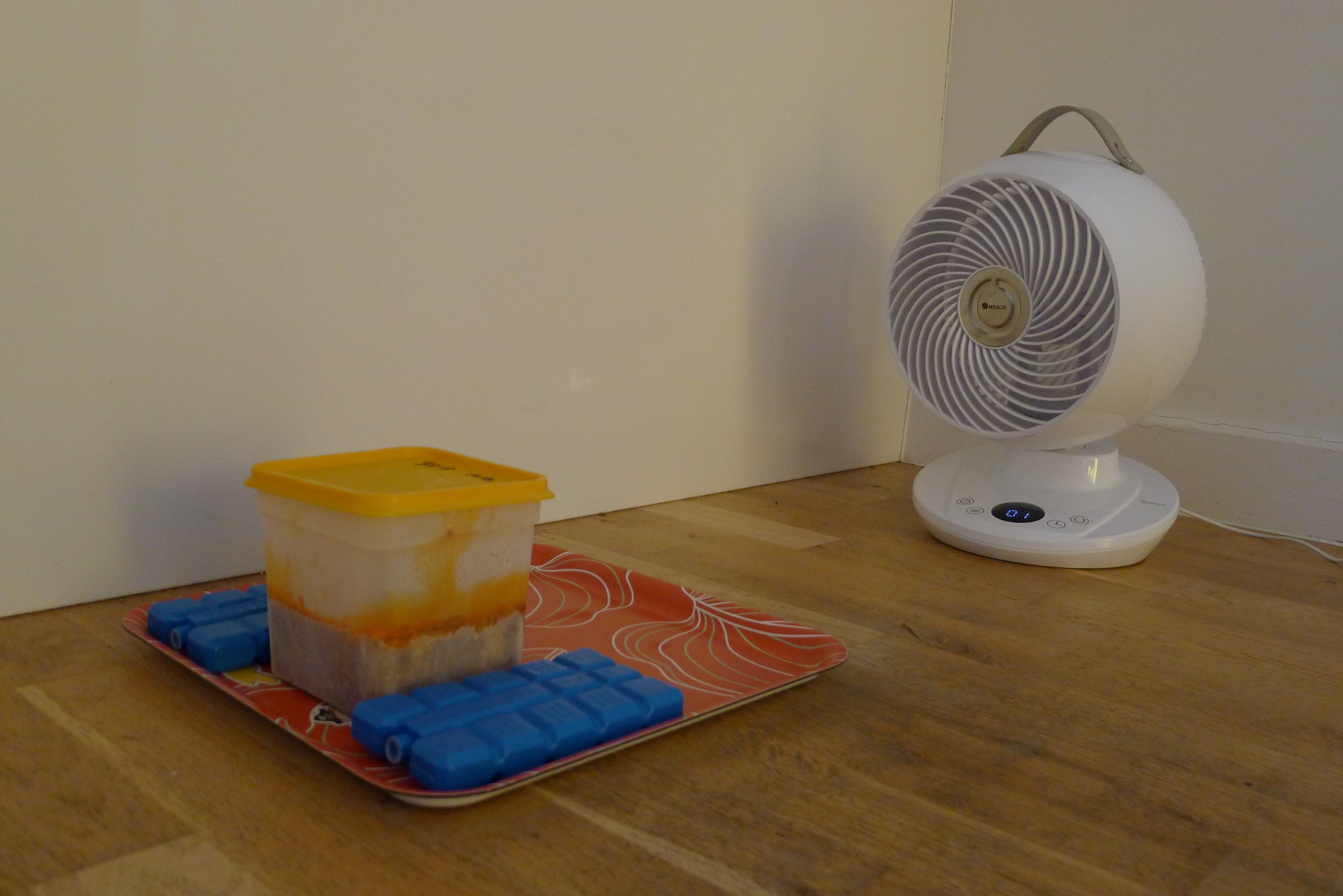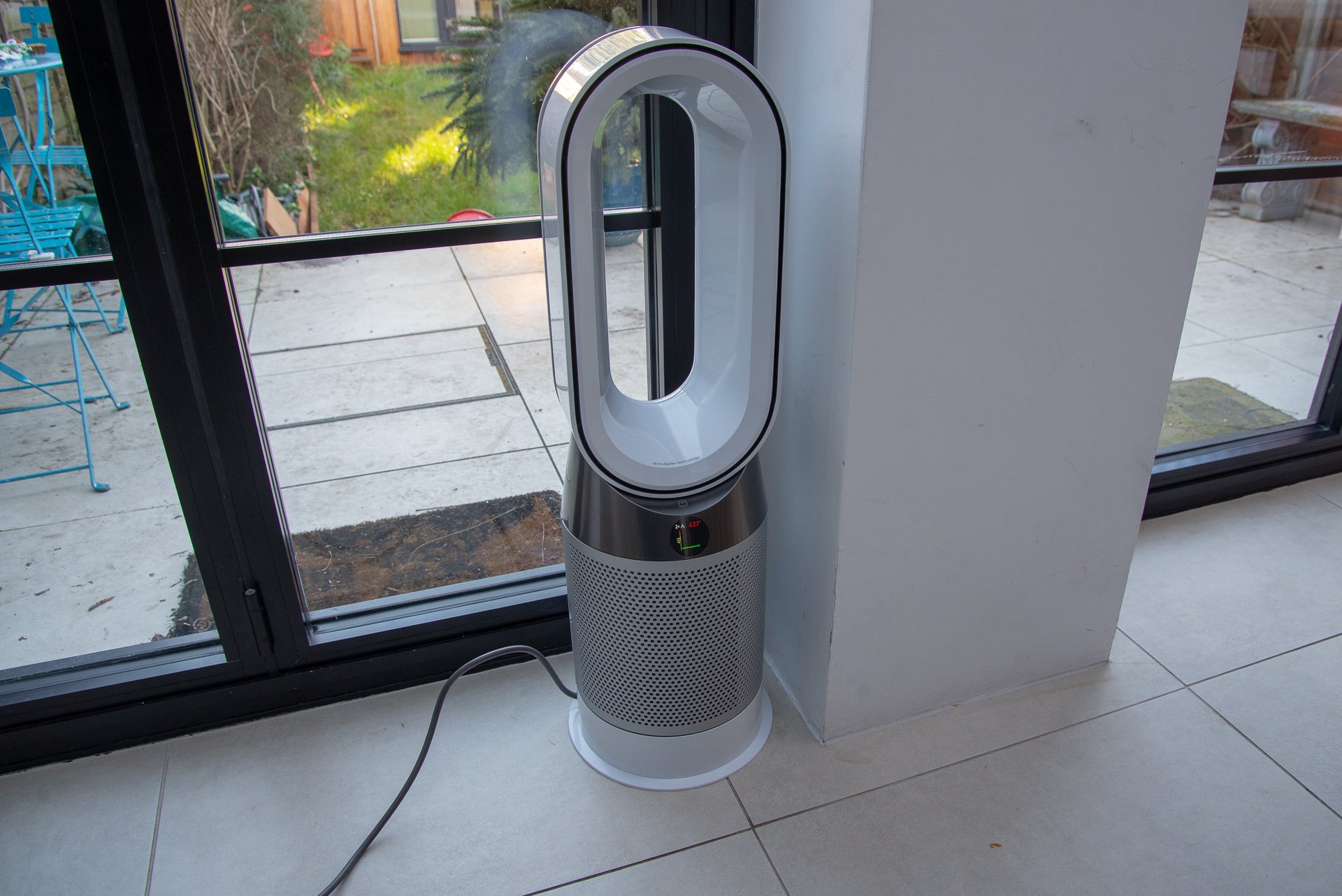Best Fan 2024: Dispel the summer heat with our top picks
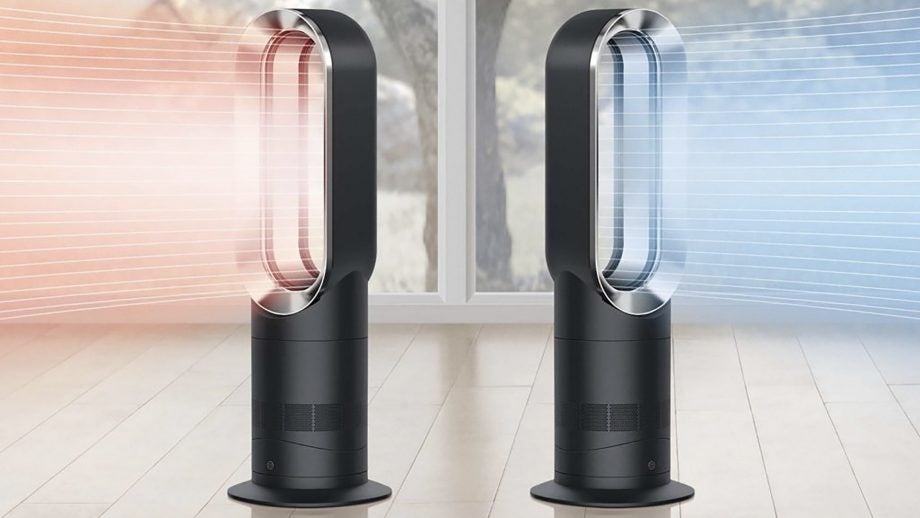
When the summertime heat kicks in, one of the best ways to avoid getting overwhelmed by the weather is to arm yourself with fan that can cool you down quickly.
As anyone who’s tried to buy a new fan in the middle of summer can attest, there’s a ridiculous amount of choice out there and mostly from brands you’ve never heard of. Just take one look at the available wares of some of the biggest online retailers and you’ll know exactly what we’re talking about.
Luckily, to save yourself from having to take a punt on a less than reputable brand, we have years of expertise under our collective belts when it come to putting all sorts of fans through rigorous testing to see how well they perform in real-world use and whether their feature sets meet the claims laid out by their respective manufacturers. Because of this extended testing, we know exactly which fans are actually worth your hard-earned cash and which ones are best kept out of your shopping basket.
With that understanding, this list congregates all of that experience to bring you the 13 best fans that are currently on the market, but there’s even more criteria to meet beyond that. Instead of just populating this list with a handful of great fans, we’ve made sure to isolate the ones that not only work best under different scenarios, but the ones that are better suited to certain budgets as well.
For instance, if you want a desk fan to keep you cool while you type away then we know exactly which one you should get, and the same thing goes for anyone on the hunt for a more powerful device that can regulate humidity during those particularly sticky summer days.
If you’re looking to populate your home with several accessories in one fell swoop then you can also check out our round-up for the best air purifiers to help keep your home free of pollens and pollutants, while our best electric heaters list can get you ready in good time for those cold winter months.
Best fans at a glance
- Best overall: MeacoFan 1056 Pedestal Air Circulator – check price
- Best purifier: Dyson Purifier Hot+Cool Formaldehyde – check price
- Best portable air conditioner: EcoFlow Wave 2 – check price
- Best budget tower fan: Dr. Prepare 13-inch Dual Oscillating Tower Fan – check price
- Best budget tower fan for natural air: Netta 32-inch Tower Fan – check price
- Best fan-heater combo: Princess Smart Heating and Cooling Tower – check price
- Best to regulate humidity: Dyson Pure Humidify+Cool – check price
- Best desktop: Dyson Pure Cool Me – check price
- Most flexible: MeacoFan 260C Cordless Air Circulator – check price
- Most powerful: VonHaus 35″ Tower Fan – check price
- Best personal evaporative cooler: Evapolar evaSMART – check price
- Best evaporative: Princess Smart Air Cooler – check price
- Most powerful desktop: Duux Globe – check price
How we test fans
All fans are put through their paces in the same way, so that we can accurately compare the performance of each one. We start by measuring air flow in metres per second (m/s). We measure at 15cm and 1m, to see how performance drops off, and at minimum and maximum fan speeds, to see what the range is. Ideally, a fan should offer a good range of speeds, ranging from a gentle breeze to a full on blast of air.
We also measure how loud fans are, at minimum and maximum speeds. You can find out more in our detailed guide to how we test fans.
- Quiet and powerful
- Horizontal and vertical oscillation
- Low power consumption
- On-fan controls are confusing
- Only three speeds
- Very quiet
- Pinpoint control of air direction
- Simple control
- Few on-board controls
- No automatic mode
- Works all year round
- Powerful purification
- Excellent smart controls
- Expensive
- Super-quiet
- Effective cooling
- Useful smart features
- Expensive
- No temperature-based smart actions
- Powerful air projection
- Horizontal and vertical oscillation
- Very quiet
- A little short
- Light and small
- Long-lasting internal battery
- Powerful air movement
- No oscillation
- Powerful air circulation
- Reasonably quiet performance
- Ioniser, three wind modes, and a remote
- Comparatively narrow base
- Two-year warranty (with registration)
- Could do with a lower fan speed
- Powerful heating and cooling
- Useful smart app and voice control
- Doesn’t take up much space
- Doesn’t display fan mode on LCD
- Could do with a lower fan speed
- Powerful fan
- Subtly effective cooling
- Smart features including scheduling and voice control
- No temperature or other sensors
- No dedicated remote control
- Not as effective as aircon
- Powerful
- Can work off-grid
- Smart app
- Lots of bits
- Expensive
- Compact
- Powerful air flow
- Excellent value
- Slightly waspy noise
- Good value
- Lots of control options
- Remote control
- Not ideal for larger rooms
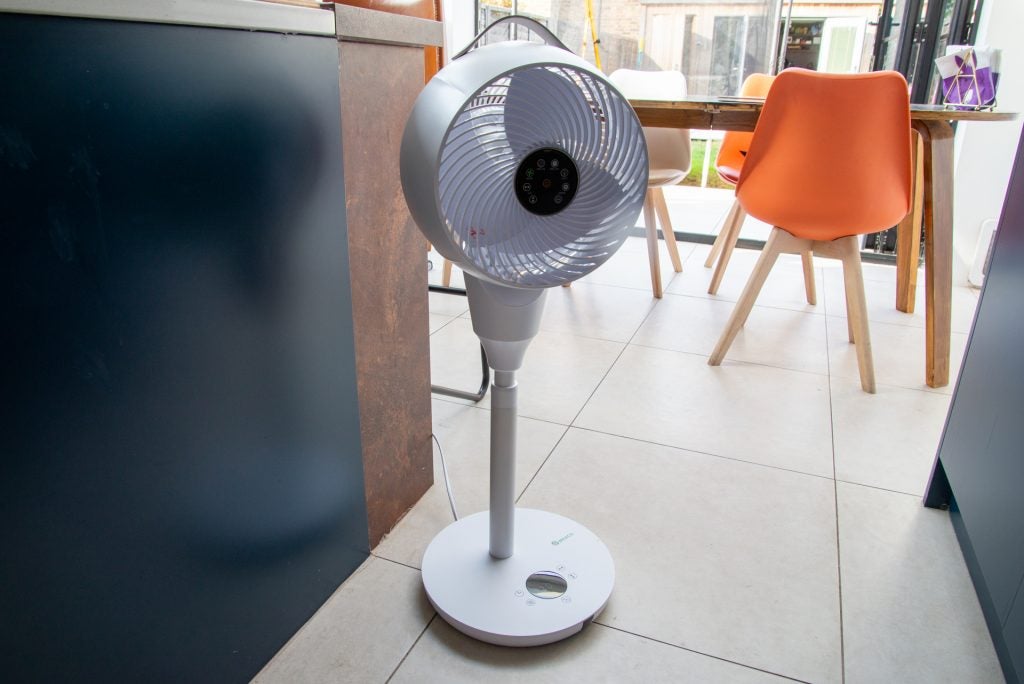
MeacoFan 1056 Pedestal Air Circulator
The best overall fan
Pros
- Powerful air projection
- Horizontal and vertical oscillation
- Very quiet
Cons
- A little short
A fan isn’t just about direct cooling, it’s about shifting stuffy, stale air around and refreshing a room. There’s no fan that can do that better than the MeacoFan 1056 Pedestal Air Circulator. A pedestal version of the desktop model, which is still available, this large fan has horizontal and vertical oscillation, so that it pushes air all around, giving full-room recirculation.
Its power helps a lot: we measured air speed at 4m/s from 15cm away making this one of the most powerful fans that we’ve tested. Fortunately, this fan is very quiet, moving between 43.5dB on the lowest fan setting up to an acceptable 57.2dB on the maximum setting. With a neat remote control giving you easy access to all of the fan’s features, this is a top-quality fan for keeping you cool and your room feeling fresh. If you want a desktop version, go for the MeacoFan 650 Air Circulator.
Reviewer: David Ludlow
Full review: MeacoFan 1056 Pedestal Air Circulator review
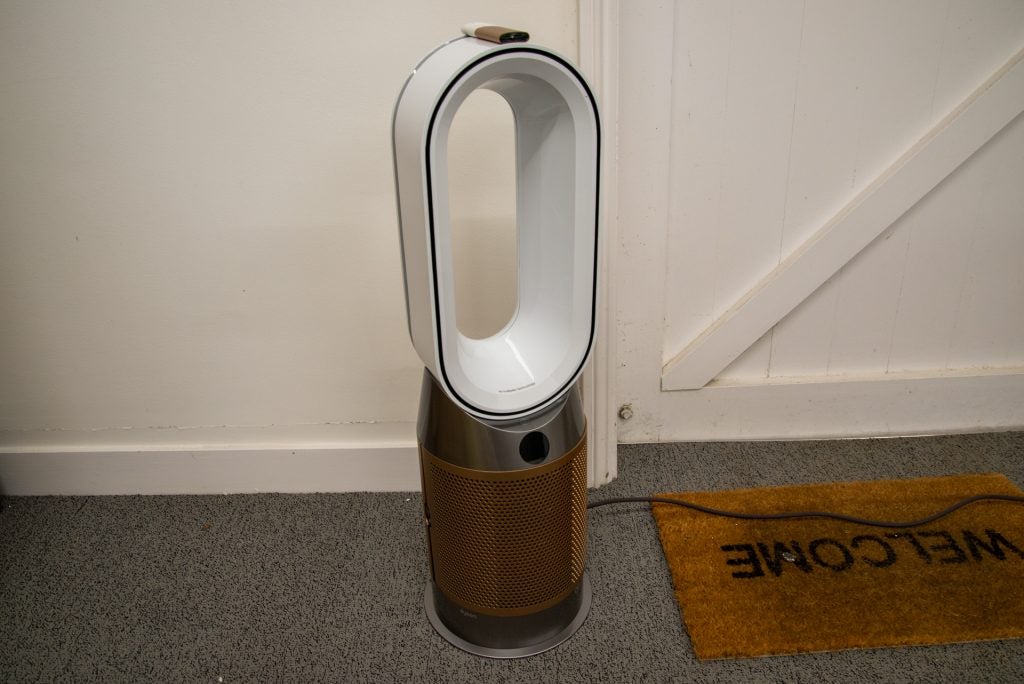
Dyson Purifier Hot+Cool Formaldehyde
The best purifying fan
Pros
- Works all year round
- Powerful purification
- Excellent smart controls
Cons
- Expensive
Most fans can only be used in the hotter months of the year, taking up space when they’re not wanted. Not so with the Dyson Purifier Hot+Cool Formaldehyde. As well as being a powerful fan, it’s also a purifier and a heater, complete with thermostat.
As a result, you can use it to purify the air all-year round (it can even blow out of the back so you don’t get a draft), as a heater in the colder months, and as a powerful fan during summer.
We measured air flow at 3.8m/s at 15cm, dropping to a powerful 2.1m/s at 1m. This fan is quiet, too, ranging between 39.25dB and 56.8dB.
This model will automatically purify the air, thanks to its sensors, dealing with dust, gasses and, new to this mode, formaldehyde. There’s a remote control, but you can use the app, Alexa or Google Assistant, too.
Exceptionally quiet and powerful, the Dyson Purifier Hot+Cool Formaldehyde isn’t cheap, but it’s a great all-in-one device that you won’t have to pack away when the weather starts to turn.
Reviewer: David Ludlow
Full review: Dyson Purifier Hot+Cool Formaldehyde

Dr. Prepare 13-inch Dual Oscillating Tower Fan
The best budget tower fan
Pros
Cons
The Dr. Prepare 13-inch Dual Oscillating Tower Fan is a relatively small tower fan that’s as at home on a desk as it is on the floor. Rather than having one set of fan blades, this model has two that work together. The result is more powerful airflow than you might expect from such a model.
Measured on its highest setting, we detected air flor at 1.7m/s at 1m away. At this kind of power, this fan can cool more than one person. Impressively, the fan is also quiet: just 48.5dB from 1m away, and 40.8dB on its minimum speed: that’s barely a whisper. Our only complaint is that the fan makes a slightly waspy noise in operation.
Controls are simple on this device: three power settings and three timers (two, four or eight hours). There’s no remote control or oscillation; if you want those features, look elsewhere on the list. If you want a cheap, small, tower fan, this is a great choice.
Full review: Dr. Prepare 13-inch Dual Oscillating Tower Fan review
Reviewer: Rene Millman

EcoFlow Wave 2
The best portable air conditioner
Pros
- Powerful
- Can work off-grid
- Smart app
Cons
- Lots of bits
- Expensive
The other products on this list are fans (or evaporative coolers), but the compact Ecoflow Wave 2 is a full-on air conditioning unit and heater. What sets this model apart from other portable air-con units, is that this one can be picked up and carried around and it has an optional battery.
Its small body means that it’s very versatile. For use indoors, two pipes are run outside: one for taking in fresh air, one for outputting hot air; cool air is blown out the front. You can also place the unit outside, pumping cold (or hot) air in through a window. Or, stick the Ecoflow Wave 2 outside of a tent, and keep the environment perfect while camping.
Rated 5100BTU, the EcoFlow Wave 2 is enough for around a 10m², so smaller rooms, camper vans and tents. On maximum power, we found that it could keep our office room at sensible temperatures, although we did have to shield our south-facing room from the sun for it to cope.
Fully smart, the Wave 2 can be controlled via Wi-Fi or Bluetooth, which makes it exceptionally easy to set up and control; there are onboard controls if you prefer.
Add the battery, and the Wave 2 runs without needing a plug. I got over two ours on maximum mode; on Eco mode, it can run for up to eight hours. You can charge it via a solar panel, making this a complete off-grid solution.
The EcoFlow Wave 2 is not cheap, but if you want a highly versatile air conditioning unit, there’s nothing quite like this.
Full Review: EcoFlow Wave 2
Reviewer: David Ludlow
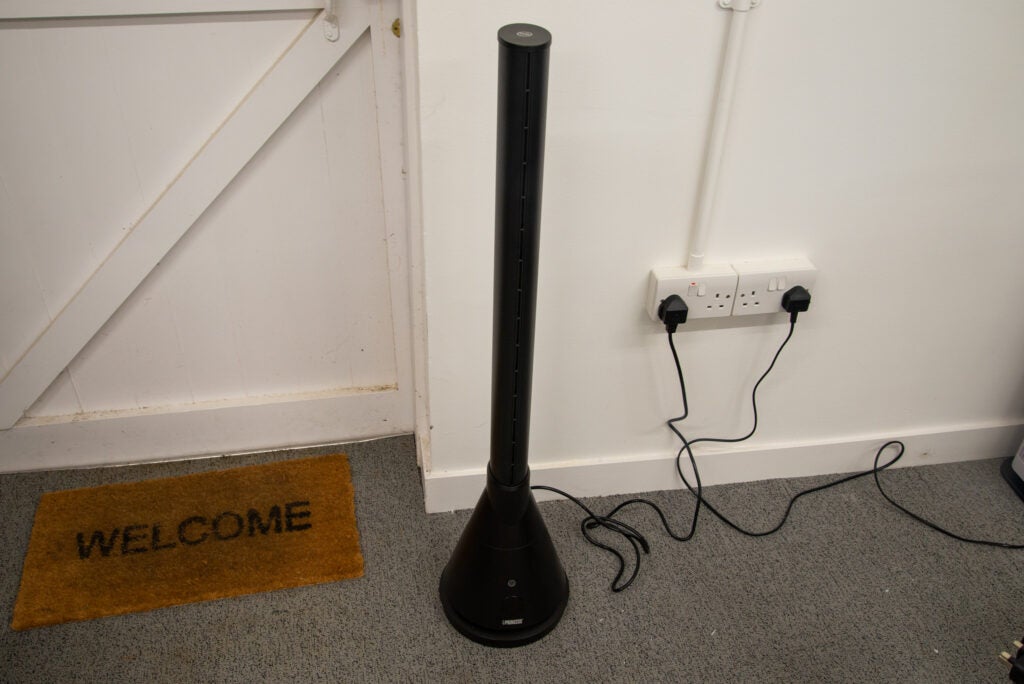
Princess Smart Heating and Cooling Tower
The best fan and heater
Pros
- Powerful heating and cooling
- Useful smart app and voice control
- Doesn’t take up much space
Cons
- Doesn’t display fan mode on LCD
- Could do with a lower fan speed
The problem with fans is that they’re great during the hot weather but just take up space when it gets cold. Things don’t have to be that way, as the Princess Smart Heating and Cooling Tower shows. As the name fully describes, this is a tower fan that also has a heating mode. To top things off it even has a smart app.
There are no controls on the fan’s body, so it’s very important to keep hold of the remote control. That would be easier if the control could be attached or stored on the fan’s body, in a similar way to Dyson fans, where the remotes magnetically attach to the top.
If you do lose the remote, there’s the smart app to fall back on, which lets you do all the same things as the remote, including setting the fan speed (10 choices), target temperature in heat mode, and the sleep timer. Connecting the app up also means that you can turn on Alexa and Google Assistant support for voice control.
We measured fan speed on maximum at 3.08m/s at 15cm, dropping to 1.31m/s at 1m. That’s pretty good, and enough air flow that you can feel this fan across a room, although there are more powerful fans on this list. On the minimum speed, the fan runs at 1.31m/s at 15cm, which is actually a little too powerful and we’d have preferred a greater range in performance.
We measured noise at a maximum of 48.5dB on the minimum setting, up to a more powerful 60.1dB on maximum – both measured from 15cm. This means that you can always hear the fan when it’s turned on, although it’s not too distracting.
We found the heat mode to be reliable, too. This fan can help push a cold room into a comfortable space, and the thermostat helps cut down on electricity bills, as the heater will turn off automatically when the right temperature has been reached.
Opt for the Dyson Purifier Hot+Cool Formaldehyde and you get air purifying too, but at a cost; for the price, the Princess Smart Heating and Cooling Tower delivers excellent performance all year-around.
Full review: Princess Smart Heating and Cooling Tower review
Reviewer: David Ludlow
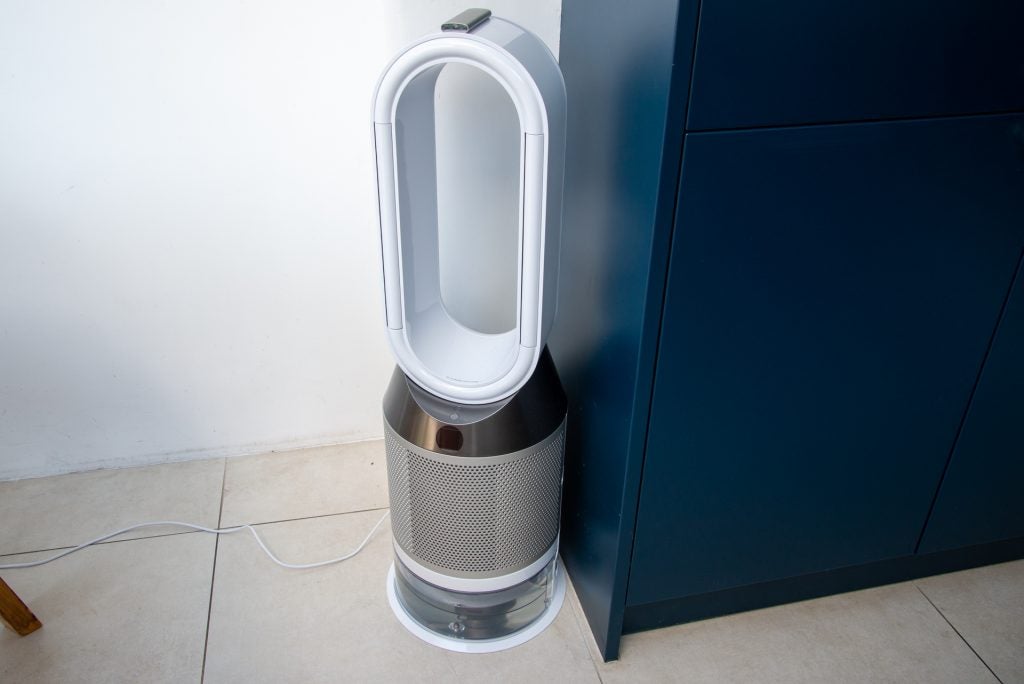
Dyson Pure Humidify+Cool
A powerful and smart purifying fan that will also keep your home at the ideal humidity
Pros
- Cools, purifies and humidifies
- Powerful app and Alexa integration
- Excellent performance
Cons
- Few onboard controls
With the Dyson Pure Humidify+Cool you get a fan that’s designed to be used all-year-round, keeping your home environment at the healthiest of levels. First, this fan is a proper air purifier, sucking in allergens and other noxious elements to keep your home air clean. It works brilliantly, and was one of the quickest fans to clean our test environment. Thanks to the onboard sensors, the fan can do this job automatically for you.
Next, this model is also a humidifier, adding moisture to the air when needed. Again, it’s a fully automated system that will only add moisture when it’s needed. This helps improve the home environment and can help with dry skin and make it easier to breathe.
Working around both technologies is a very powerful fan, capable of pushing air at 4.4m/s from 15cm on maximum speed, down to a gentle trickle on the lowest speed. As this is a Dyson fan, it’s also extremely quiet: on the lowest speed you really can’t hear it at all. Air comes out of the two rotating barrels on the side, which give this fan a unique Breeze mode that accurately simulates real wind.
In winter or when you don’t want cold air, you can redirect air out the back of the fan, with the air barrels rotating all the way around. There’s a remote control that connects magnetically to the top that lets you control every feature, but you can also use the Dyson Link app for remote control. Alexa integration is supported, including using Routines to automatically control the fan. If you want a fan that can keep your home air clean and improve the environment, this is the model to buy.
Reviewer: David Ludlow
Full review: Dyson Pure Humidify+Cool review
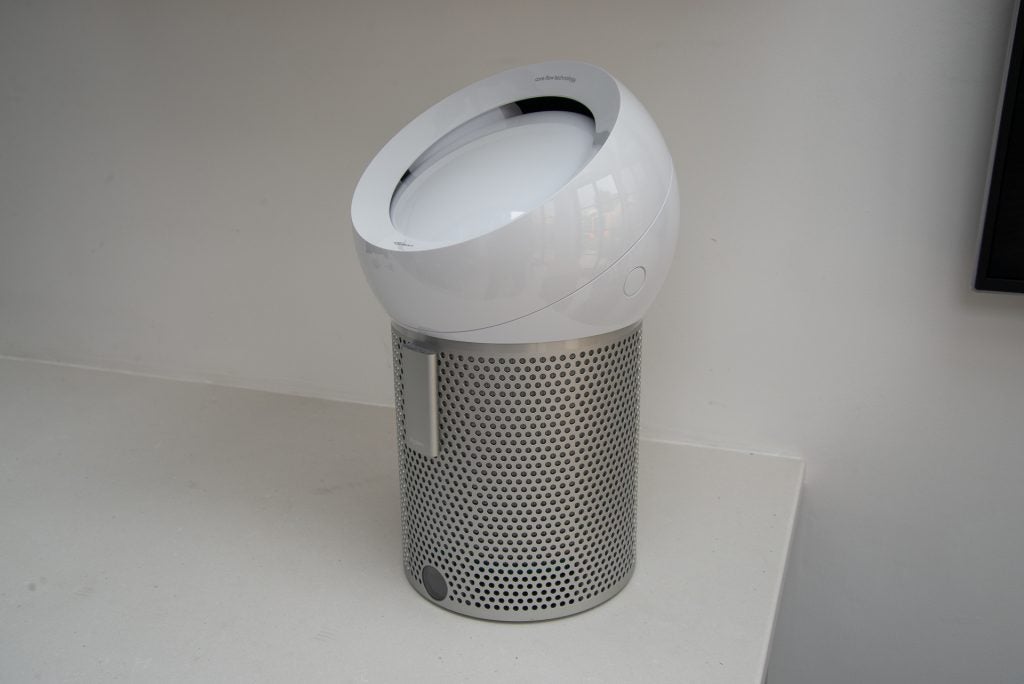
Dyson Pure Cool Me
The best desktop fan
Pros
- Very quiet
- Pinpoint control of air direction
- Simple control
Cons
- Few on-board controls
- No automatic mode
Dyson fans all look so distinctive with their bladeless heads that you can put a hand through that the Dyson Pure Cool Me immediately looks different thanks to its ball head. The reason for the design change is that the fan uses Dyson’s Core Flow technology, which lets the convex surface direct a fine stream of air exactly where you want it, making it perfect for personal cooling.
Sliding the plastic disc up and down lets you point the air flow where you want it. There’s also a 90-degree oscillation mode, so you can sweep the air around. The benefits of the new system are three-fold. First, you can sit in a bubble of cooling air; secondly, on oscillation mode, the fan doesn’t blow bits of paper on your desk everywhere; third, the fan is far smaller than Dyson’s previous desktop models.
Performance is excellent, managing a blast of air at 6.2m/s from 15cm away on maximum speed, while minimum speed just delivers a gentle blast that wouldn’t measure on our test equipment. Noise levels are as low as you’d expect from Dyson, measuring just 37dB on the lowest setting, which is effectively background noise levels; on maximum, which is powerful, the fan comes in at 63.5dB.
Even better, the fan has a filter inside it, so as it cools you, it purifies the air. There’s no auto mode on this model, but as long as the fan is one it will clean the air it blows at you. As with previous models, all control is via the remote which clips onto the front of the fan. The only thing missing from this model is app control, which is a minor shame.
If you want powerful personal cooling and air purification, this clever fan is the model to buy.
Reviewer: David Ludlow
Full review: Dyson Pure Cool Me review
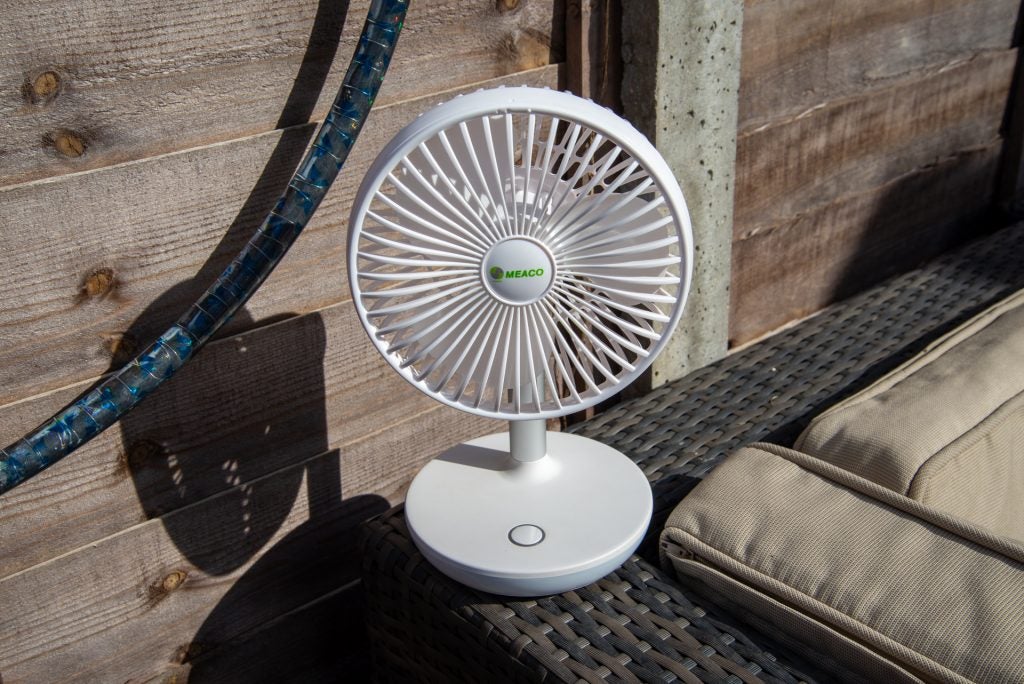
MeacoFan 260C Cordless Air Circulator
The best fan for flexibility
Pros
- Light and small
- Long-lasting internal battery
- Powerful air movement
Cons
- No oscillation
If you need a fan where cables won’t reach, say to a garden on a hot day or in a tent when you go camping, the MeacoFan 260C Cordless Air Circulator is the model for you. Thanks to its integrated battery, charged via USB, you can run this model for up to 14 hours without having to go anywhere near a power socket.
We’ve seen small, portable models before, and they’ve usually been a bit rubbish. Not so with the MeacoFan 260C Cordless Air Circulator, which has a lot of power, reaching a maximum air speed of 2.3m/s from 15cm away. That’s enough air to give you a cooling dose of air. There are four fan speeds in total, with the lowest running at 49.7dB, or quiet enough to sleep through.
As this is a portable model, you lose out on some features that bigger models have: you don’t get a remote, there are only four fan speeds and there’s no oscillation. If you need any of these options, look elsewhere, but if you want a flexible fan you can take everywhere this is the best model that we’ve reviewed.
Reviewer: David Ludlow
Full review: MeacoFan 260C Cordless Air Circulator review
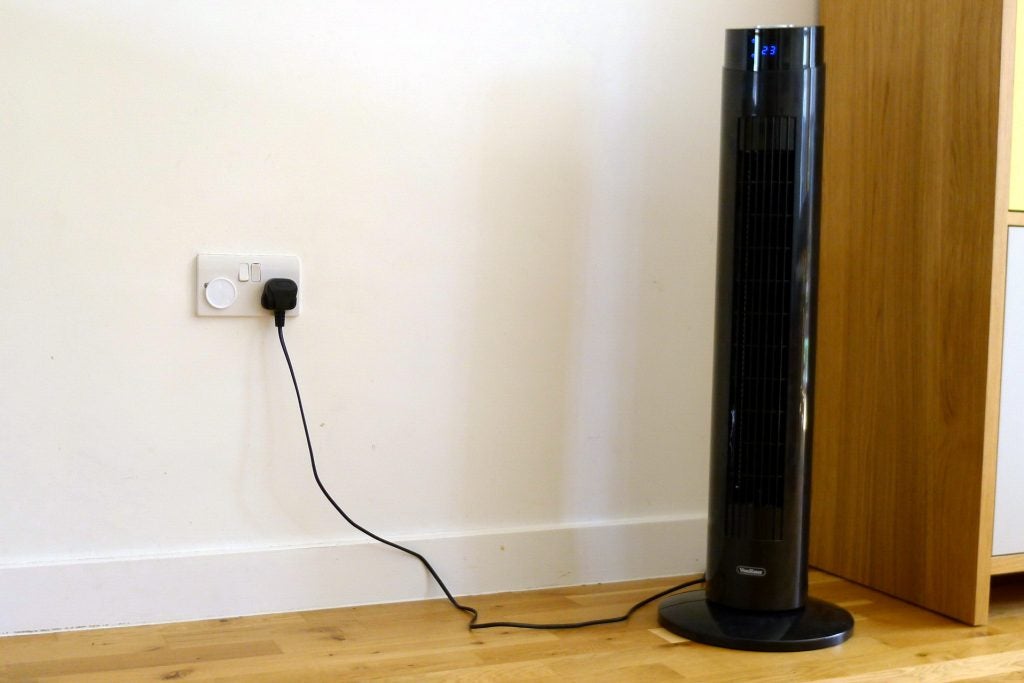
VonHaus 35″ Tower Fan
The most powerful fan
Pros
- Powerful air circulation
- Reasonably quiet performance
- Ioniser, three wind modes, and a remote
- Comparatively narrow base
- Two-year warranty (with registration)
Cons
- Could do with a lower fan speed
Tower fans are a great space saver but they often sacrifice power to get a slimmer body. Not so with the VonHaus 35″ Tower Fan, which manages to deliver some of the best fan performance that we’ve seen, both up close and across a room.
At full power, the fan delivered air speed at 4.8m/s, which only dropped at 2.8m/s at one metre and an effective 1.6m/s at two metres. That’s enough air speed to keep you cool at a distance, making the VonHaus 35″ Tower Fan a suitable fan to cool an entire room. Our one minor complaint about fan speed is that the lowest setting is still a relatively powerful 4m/s at 1m – we’d have liked a slightly lower minimum speed.
High fan speeds often come with noise, but that’s a trap that the VonHaus 35″ Tower Fan avoids. At 53.9dB on maximum, this fan is pretty quiet for the fan speed; however, at minimum, the fan is still 53.1dB, which is a little loud for sleeping with.
There is a remote control and a display that shows you what the current temperature and fan setting is. This display is a little hard to read, but we can forgive this minor issue, given how good the fan is. Even better, the VonHaus 35″ Tower Fan is one of the cheapest fans that we’ve tested, too. If you’re after a powerful tower fan at a great price, look no further.
Reviewer: Simon Handby
Full review: Vonnhas 35″ Tower Fan

Netta 32-inch Tower Fan
The best budget tower fan for natural air flow
Pros
- Good value
- Lots of control options
- Remote control
Cons
- Not ideal for larger rooms
At just under £40, the Netta 32-inch Tower Fan is a little cheaper than many other products on this list, yet it’s packed with features. As well as three regular speed settings, there are two types of airflow: natural wind mode varies fan speed to make it feel more natural; wind mode uses one fan speed.
Alongside these controls, there’s a timer (one, two or four hours) and oscillation mode (65° angle). If you don’t want to walk to the fan, then there’s also a remote control that attaches magnetically when not in use.
We found this a good fan for small- to medium-sized rooms. On its high setting, the fan reached an airspeed of 3.2m/s at a distance of 15cm. That’s good but there are more powerful fans that are better suited to larger rooms. At this speed, we found that the fan wobbled slightly, too. At 1m distance, the fan speed was still a decent 2.2m/s, providing a noticeable cool airflow. We were impressed with how quiet this fan was: at 15cm, we measured it at 66.2dB, and at 1m, it was just 50.3dB.
If you want a well-priced fan for a medium-sized room, then this one is a good choice.
Full review: Netta 32-inch Tower Fan
Reviewer: Rene Millman
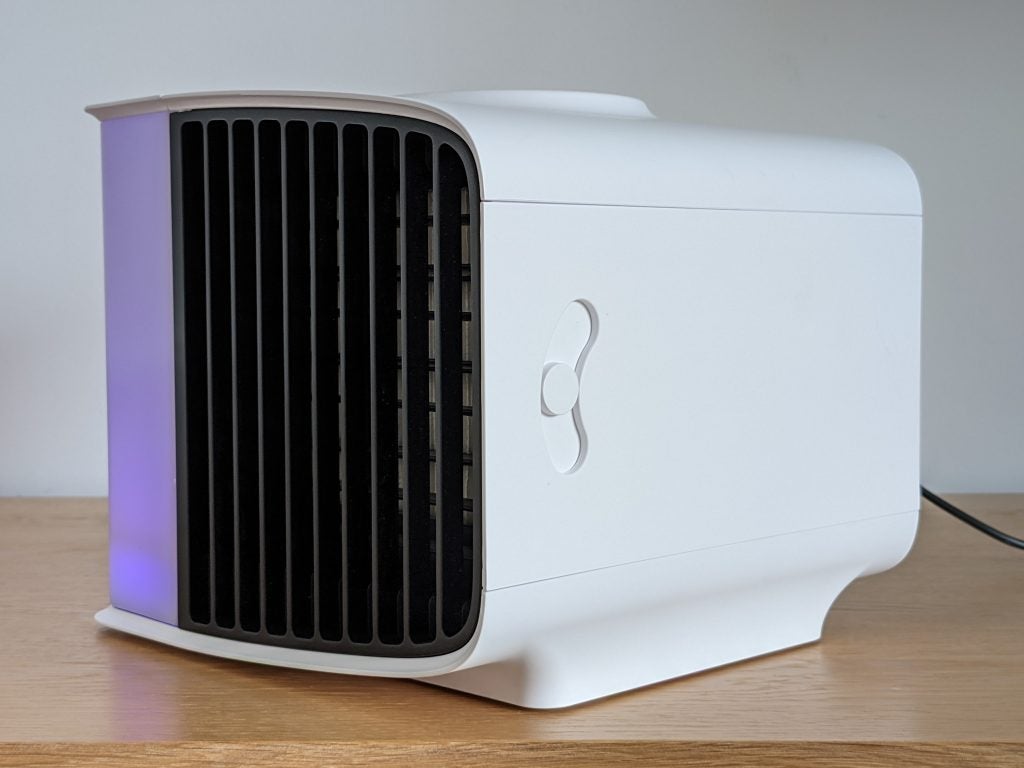
Evapolar evaSMART
The best personal evaporative cooler
Pros
- Super-quiet
- Effective cooling
- Useful smart features
Cons
- Expensive
- No temperature-based smart actions
We’ve been impressed with Evapolar’s previous personal evaporative coolers, and the Evapolar evaSMART is the best yet. It’s a little expensive compared to other evaporative coolers, but its smart features and envelope of cold air make it well worth the cash.
This model uses a water tank, which lasts for between four and nine hours, depending on the temperature and humidity level. In either case, it’s enough water to get you through most of a hot night.
Unlike a fan, which can’t affect the actual temperature, the evaSMART can reduce the temperature of the air it blows at you: we measured a 3C drop. This is a small amount, but the cooling envelope of air around us made us feel much cooler than if we’d just used a fan.
Air flow isn’t particularly fast. At full speed, just 15cm from the grille, we measured air at 1.9m/s, but the wind speed was unmeasurable by 1m. As this is a personal fan that physically cools the air, the evaSMART doesn’t need to blow air any faster. In fact, at times it felt too cold sitting in front of this cooler.
Although you can control the fan from its on-body controls, there’s also a smart app for remote control (including changing the colour of the light), plus Amazon Alexa and Google Assistant Skills.
It’s a touch on the expensive side, but if you want a small cooler that can keep you comfortable while you work or sleep, this one is very effective.
Reviewer: Simon Handby
Full Review: Evapolar evaSMART review
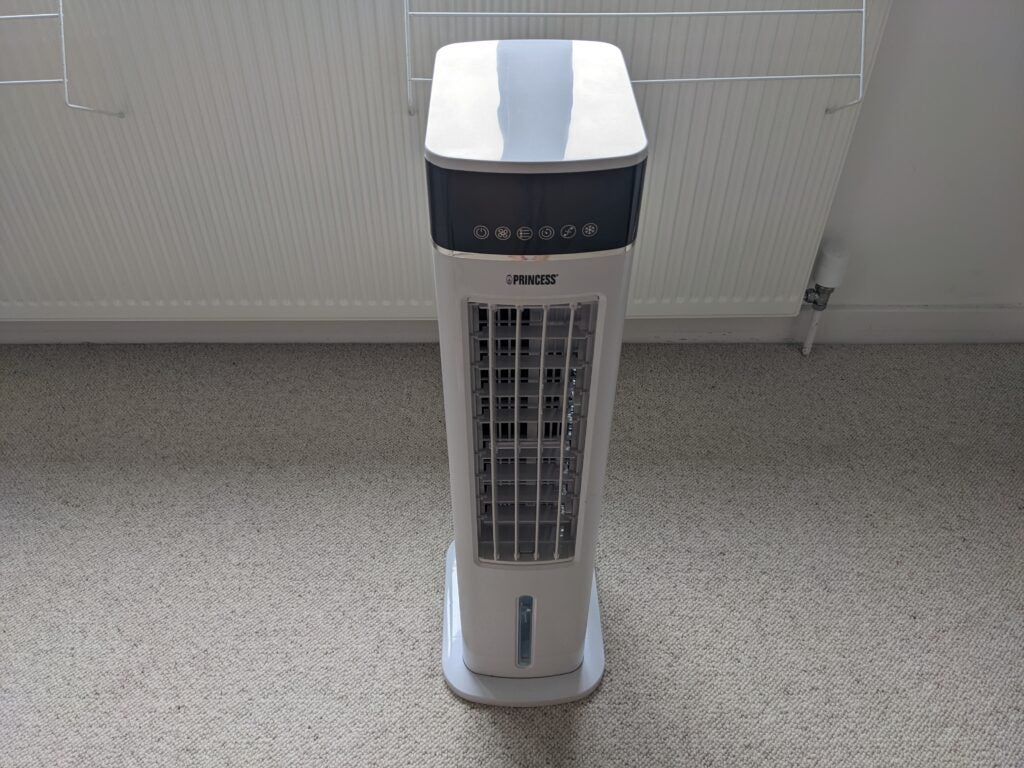
Princess Smart Air Cooler
The best evaporative cooler
Pros
- Powerful fan
- Subtly effective cooling
- Smart features including scheduling and voice control
Cons
- No temperature or other sensors
- No dedicated remote control
- Not as effective as aircon
Sitting somewhere between an air conditioning unit and a fan, the Princess Smart Air Cooler uses a tank of water to cool the air through evaporation. This makes it more effective than just a fan on a hot summer’s day, although this model is also a powerful fan in its own right.
Externally, this looks like a regular fan, although there’s a difference when you look at the base: this holds a 3.5-litre water tank, which can also hold the two provided ice packs (these go in your freezer and cool the water in the fan).
A small pump sucks up water and trickles it down a membrane inside. As the fan blows air over the water, it evaporates, cooling the air. We measured a drop in air temperature blown of 2°C, which isn’t as powerful an effect as with an air conditioner, but is an improvement over a fan.
Plus, the Princess Smart Air Cooler costs a lot less to run than an air conditioner. We measured power and this air conditioner will cost around 2p per hour to run at current costs.
The Princess Smart Air Cooler is a powerful fan, too. At 1m away, the fan is capable of blowing air at between 2.5m/s and 4.1m/s, so you can feel its full effect even in a larger room. We didn’t find this fan noisy, but it does have a slightly annoying whine to it.
We found the Princess Smart Air Cooler easy to control, with all of the options you need on the front panel and the remote. Plus, this is a smart fan, so you can control it via the decent app, which also provides voice control via Amazon Alexa and Google Assistant.
If you’re looking for a powerful fan that will blow colder-than-room-temperature air and doesn’t cost a fortune to run, this is a great choice.
Full review: Princess Smart Air Cooler
Reviewer: Simon Handby
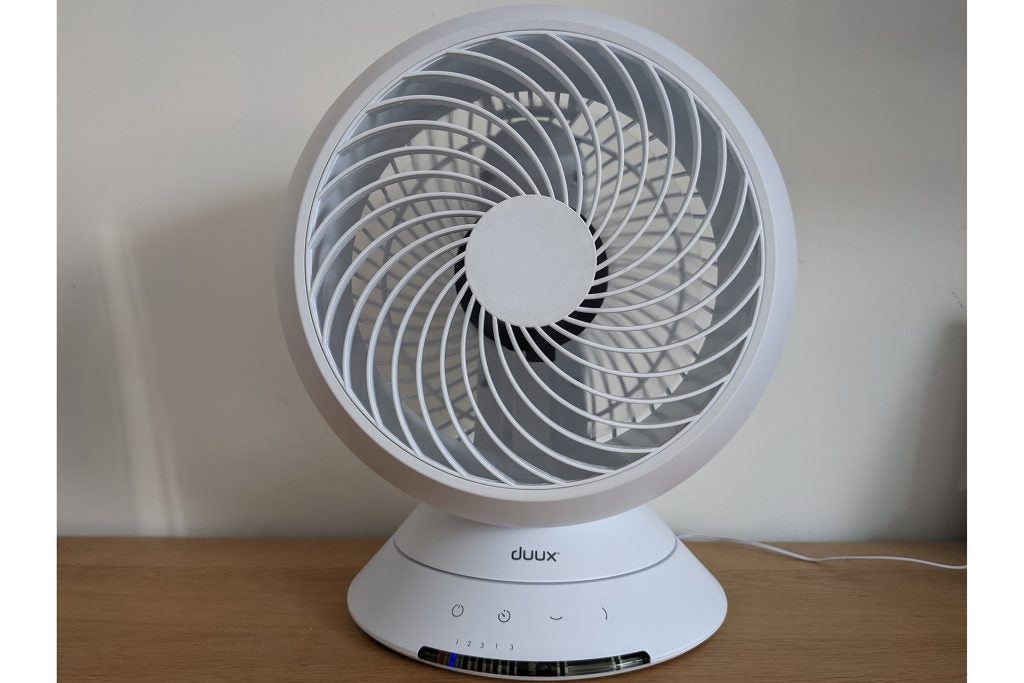
Duux Globe
The most powerful desktop fan
Pros
- Quiet and powerful
- Horizontal and vertical oscillation
- Low power consumption
Cons
- On-fan controls are confusing
- Only three speeds
This ball-shaped desktop fan may not be very big but the Duux Globe can put out a lot of air. Cranked to the max, it outputs air at a speed of 4.6m/s at 15cm and 3.6m/s at 1m – that shows that this fan can cool at a distance even if it is predominantly a personal desktop model. This level of power is handy in an office: you can keep cool on a lower setting while you work, and then whack up the power if you move away from your desk and want to keep cool.
There are controls at the base of the fan although these are a little confusing: you have to tap, rather than hold, the power button to change modes. Fortunately, there’s a remote control in the box, which makes it easier to use the Duux Globe.
You can turn on horizontal and vertical oscillation, so the fan can be used to refresh air over a wider range, which is useful for refreshing an entire room. Our one minor complaint is that this fan could do with a more gentle speed; all speed options are quite intense.
Reviewer: Simon Handby
Full review: Duux Globe review
We also considered…
FAQs
A fan can’t change a room’s temperature; it merely circulates air. However, the breeze from a fan on your body aids sweat evaporation, which makes you cooler. In humid environments, fans don’t work so well, as less sweat evaporates.
For this reason, you may want to think about buying a dehumidifier, too, which will improve a fan’s performance and make your room feel more comfortable. The increased air circulation can also stop a room from feeling stuffy.
To actually cool a room you need something that can lower the air temperature. Air conditioning is the main option in this instance, but a second option is to use an evaporative cooler. These feature a tank of water, which slowly evaporates to help cool the air, and work best in dry, hot climates.
Fans make you feel cooler by helping sweat evaporate from your body. How effective a fan is, depends largely on how humid it is. When there’s high humidity, it’s hard for sweat to evaporate, so a fan doesn’t do much to help cool you. This is why on humid days we tend to think of them as being hot and sweaty. Conversely, when humidity is lower, it’s much easier for evaporation to happen, which is when fans feel the most effective.
You can use this knowledge to your advantage and purchase a dehumidifier for those sweltering days. With a dehumidifier sucking moisture out of the air, the effectiveness of fans goes up. A dehumidifier will also make an evaporative cooler more effective, too.
Air conditioning units can also operate as dehumidifiers. So, if you have a portable unit but find it too loud to sleep with, you can run it before you go to bed in dehumidifier or cooling mode, and then switch to a fan at night. That way, you get the best of both worlds: a cool and less humid environment to go to sleep in with a fan to keep you cool during the night
Desktop fans are the traditional models. These let you tilt the fan to direct airflow; you turn on the oscillation mode to let the fan sweep from side to side.
Pedestal fans look like tall desktop fans, and are designed to stand on the floor. Typically, they have larger blades, so take up more room, but this makes them more powerful. With most models offering height adjustment, in addition to pivot and oscillation, pedestal fans are easier to configure for the perfect cooling breeze.
Tower fans take up very little floor space and blow air out of a tall column. For the reduction in size you do sacrifice some power, and you don’t get height or pivot adjustments either – just oscillation. As a result, you may need to use a tower fan closer to you, but they’re a great choice where space is at a premium.
Noise is important, particularly if you want to sleep with a fan turned on. We’ve measured every fan’s sound levels at both maximum and minimum to help you decide.
A fan with a remote control can be a good option if you want to adjust settings on the fly. This is particularly true in the bedroom, where you may not want to get out of bed to turn off your fan. On that note, look for a fan with a sleep timer so that it will shut off after a set time.
More advanced options on high-end fans include air filters to help clean the air, or heating elements so that you can keep warm in the winter.
Evaporative coolers use a tank of water and a pump. As water evaporates it cools the air, letting these fans blow out air that’s colder than the ambient temperature: think of how it feels if you spray yourself with water on a hot day. The good thing about evaporative coolers is that they’re cheaper to run than an air conditioner and work with windows open. The downside is that they don’t work very well where it’s humid and water can’t evaporate.
Performance also differs depending on the level of humidity: evaporative coolers work best in very dry environments where the effect of evaporation is to also increase humidity for a more comfortable environment. Fortunately, UK summers tend to be hot but not that humid, so evaporative coolers work fairly well. However, they don’t reduce the temperature of a room as air conditioning will and work best when you’re in the cooling line of the fan.
Air purifiers are a good way to boost the internal comfort of your home. They’re designed to filter out impurities in the air, including pollutants, allergens, dust and, in some cases, gasses. By filtering these out of your air, you get cleaner, purer air inside your home, which is beneficial to all but particularly those with respiratory problems or allergies.
While you can buy standalone air purifiers, it means that you end up with multiple boxes around your home. Having an air purifier built into a fan gives you a dual-purpose design. The main thing to watch out for is whether or not there’s a diffuse mode, where air can be directed out the back of the fan: that way, you can use the purification features in the colder months, without getting a blast of cold air.
Smart features don’t change what a fan is capable of, but they do let you control them automatically via an app and, possibly, via voice using Amazon Alexa or Google Home. The benefit, for most people, is one of laziness, as you can control your fan without having to stand up and move. However, some models let you do some clever things. For example, with Dyson smart fans, you can programme automatic routines, such as automatically turning the fan off when a motion sensor detects that nobody is in the room, helping save energy. The downside of smart fans is that they’re typically more expensive. A cheap workaround is to use an old fan with physical controls connected to a smart plug: this won’t let you choose the fan speed but will let you turn the fan on and off remotely.
All fans can adjust the amount of air that comes out of them by adjusting how fast their blades spin: the slower they go, the lower the air flow. Having control over the air flow is very important for different situations, and where you sit. So, as our tests show, the slower the fan speed, the less the impact is at distance, so if you sit further from the fan or want to cool more people, you need a higher fan speed. Conversely, if you’re sitting at a desk and just want to cool yourself, then you can get by with a lower fan speed, which will also mean that you don’t blow papers around on your desk.
There’s also a difference in noise at different fan speeds, with lower fan speeds quieter, and faster louder. This is important at night, where you may want a slower, more gentle and quieter fan speed, rather than roar of full cooling power.
Generally speaking, the more fan speeds a fan has, the greater the difference between minimum and maximum power, giving you a greater range of options for cooling. Some fans, on the other hand, have few cooling speeds, so you get little difference between full power and low power.


